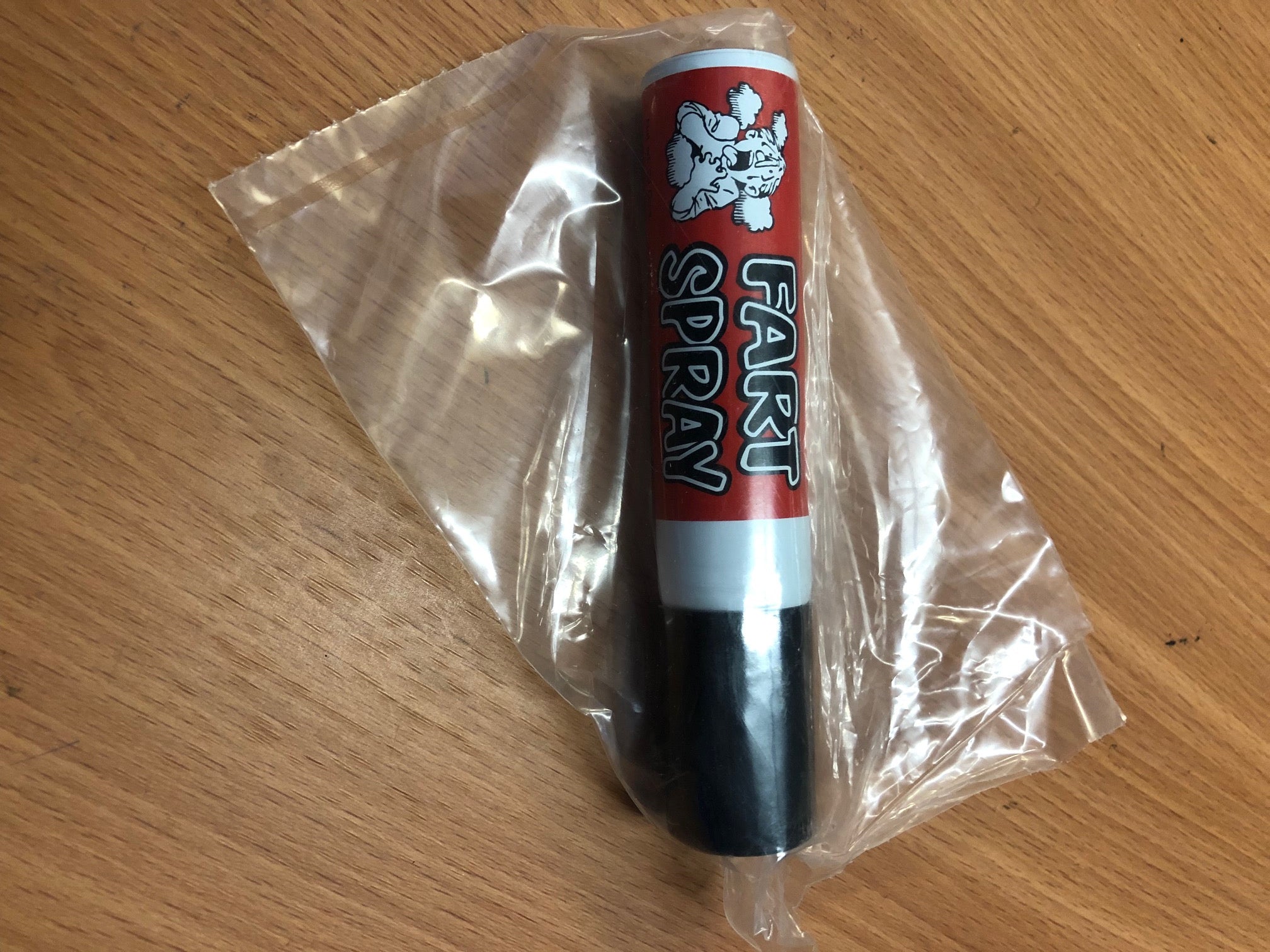

FAQs
What Will Make Me Fart
Modified: September 23, 2023
Find out what general questions can cause you to fart and learn how to avoid them for a comfortable day.
(Many of the links in this article redirect to a specific reviewed product. Your purchase of these products through affiliate links helps to generate commission for Under-tec.com, at no extra cost. Learn more)
Table of Contents
- Introduction
- Understanding the Digestive System
- Common Causes of Flatulence
- Foods that May Cause Increased Flatulence
- Carbonated Drinks and Flatulence
- Dairy Products and Flatulence
- High-Fiber Foods and Flatulence
- Beans and Flatulence
- Cruciferous Vegetables and Flatulence
- Artificial Sweeteners and Flatulence
- Strategies to Reduce Flatulence
- Over-the-Counter Remedies for Flatulence
- When to Seek Medical Attention
- Conclusion
Introduction
Flatulence, commonly known as farting, is a natural bodily function that can sometimes be embarrassing or uncomfortable. We’ve all experienced the awkwardness of letting one slip in a crowded room or the discomfort that comes with feeling gassy. While passing gas is a normal and necessary part of digestion, excessive flatulence can be bothersome and can even interfere with daily activities.
Understanding the causes of flatulence and learning how to manage it can help alleviate the embarrassment and discomfort associated with excessive gas. In this article, we will explore the factors that contribute to flatulence and discuss strategies for reducing its occurrence.
The digestive system plays a crucial role in breaking down the food we consume and converting it into essential nutrients. Along the way, gases such as nitrogen, carbon dioxide, hydrogen, and methane are produced. These gases are typically absorbed into the bloodstream or expelled through burping or flatulence. When there is an excessive amount of gas in the digestive system, it can lead to bloating, discomfort, and increased flatulence.
There are several common causes of flatulence, ranging from dietary choices to digestive disorders. Certain foods are known to promote gas production, while others can lead to difficulty digesting certain sugars and fibers. Additionally, lifestyle factors such as eating too quickly or chewing gum can contribute to swallowing excess air, which can result in increased flatulence.
While passing gas is a normal bodily function, it can sometimes be an indicator of underlying health issues. In some cases, excessive flatulence may be a symptom of digestive disorders such as irritable bowel syndrome (IBS) or lactose intolerance. It is important to identify the potential causes of flatulence to determine the best course of action for managing it effectively.
Throughout this article, we will explore the different factors that can contribute to flatulence and discuss strategies to reduce its occurrence. By understanding the causes and implementing simple lifestyle changes, it is possible to minimize the discomfort and embarrassment often associated with excessive gas.
Understanding the Digestive System
The digestive system is a complex network of organs and processes that work together to break down food and extract nutrients from it. It starts in the mouth, where enzymes begin the process of breaking down carbohydrates, and continues through the esophagus, stomach, small intestine, and large intestine.
As food moves through the digestive system, it is broken down into smaller molecules that can be absorbed by the body. Along the way, various enzymes, acids, and bacteria help to break down the food and facilitate the absorption of nutrients.
During the digestion process, gas is also produced. This gas can come from several sources, including swallowed air, chemical reactions in the stomach, and the fermentation of undigested carbohydrates in the large intestine. The gas produced consists mainly of nitrogen, oxygen, carbon dioxide, hydrogen, and small amounts of methane.
While small amounts of gas are normal and are usually expelled through burping or more commonly, flatulence, excessive gas can lead to discomfort and embarrassment. Understanding how the digestive system works can help shed light on the factors that contribute to increased flatulence.
One of the main sources of gas in the digestive system is swallowed air. When we eat or drink, we naturally swallow small amounts of air. This air can get trapped in the digestive system and contribute to the buildup of gas. Factors such as eating too quickly, drinking carbonated beverages, or chewing gum can increase the amount of air we swallow and result in increased flatulence.
Another source of gas in the digestive system is the breakdown of carbohydrates, particularly those that contain indigestible fibers. Certain types of fiber, such as those found in fruits, vegetables, and whole grains, are difficult for the body to break down completely. When these fibers reach the large intestine, bacteria break them down through a process called fermentation. This fermentation process produces gas as a byproduct, which can lead to increased flatulence.
In addition to swallowed air and the fermentation of fiber, the production of stomach acid and digestive enzymes can also contribute to increased gas in the digestive system. Chemical reactions that occur during digestion can release gases such as carbon dioxide and hydrogen, which can further contribute to flatulence.
Understanding the intricacies of the digestive system can help us comprehend why flatulence occurs and the factors that contribute to its increase. By becoming aware of these processes, we can take steps to manage and reduce the occurrence of excessive gas.
Common Causes of Flatulence
Flatulence can be caused by a variety of factors, ranging from the foods we consume to our eating habits and underlying health conditions. Understanding these common causes can help us identify potential triggers and make informed choices to reduce flatulence.
One common cause of flatulence is the consumption of certain foods that are known to promote gas production. These foods are typically high in carbohydrates, particularly those that contain indigestible sugars and fibers. Examples include beans, lentils, broccoli, cabbage, onions, and Brussels sprouts. These foods contain a type of carbohydrate known as oligosaccharides, which are difficult for the body to break down completely. As a result, they undergo fermentation in the large intestine, leading to the production of gas.
Another major culprit of flatulence is the consumption of carbonated drinks. These beverages contain dissolved carbon dioxide, which can get trapped in the digestive system and contribute to bloating and increased gas. Carbonated drinks include soda, sparkling water, and certain types of alcoholic beverages.
Dairy products can also contribute to flatulence, especially in individuals who are lactose intolerant. Lactose is the sugar found in milk and other dairy products. For those with lactose intolerance, the body lacks the enzyme lactase, which is responsible for breaking down lactose. As a result, undigested lactose reaches the large intestine, where it is fermented by bacteria, leading to gas production.
High-fiber foods, such as fruits, vegetables, and whole grains, can also contribute to flatulence. While fiber is an essential nutrient that aids in digestion and promotes bowel movement, certain types of fiber are more difficult for the body to break down. These fibers pass through the digestive system relatively intact and are then fermented by bacteria in the large intestine, resulting in gas production.
In addition to dietary factors, certain lifestyle habits can contribute to increased flatulence. Eating too quickly can result in swallowing excess air, which can become trapped in the digestive system and contribute to gas buildup. Chewing gum and drinking through straws also increase the chances of swallowing air and can contribute to flatulence.
It’s important to note that excessive flatulence can sometimes be a symptom of an underlying health condition. Digestive disorders such as irritable bowel syndrome (IBS), inflammatory bowel disease (IBD), and celiac disease can all contribute to increased gas production. If you experience persistent or severe flatulence, along with other digestive symptoms, it’s important to consult a healthcare professional for proper diagnosis and treatment.
By understanding the common causes of flatulence, we can make conscious choices about our diet and lifestyle to help reduce the occurrence of excessive gas. Small changes such as avoiding gas-promoting foods, eating slowly, and making sure to address any underlying digestive issues can significantly improve our digestive comfort and overall well-being.
Foods that May Cause Increased Flatulence
The foods we consume play a significant role in the production of gas in the digestive system. Certain foods are known to promote increased flatulence due to their composition or the way our bodies digest them. Being aware of these foods can help us make informed choices and reduce the occurrence of excessive gas.
One group of foods that may cause increased flatulence is legumes, which include beans, lentils, and chickpeas. Legumes contain a type of carbohydrate known as oligosaccharides, which the body struggles to digest fully. As a result, these carbohydrates can undergo fermentation in the large intestine, leading to the production of gas. Soaking legumes before cooking or using digestive aids like Beano can help reduce the gas-producing effects.
Certain vegetables are also known to contribute to increased flatulence. Cruciferous vegetables, such as broccoli, cabbage, cauliflower, and Brussels sprouts, contain sulfur compounds that can be difficult for the body to break down completely. As a result, these compounds undergo fermentation in the large intestine, leading to the production of gas. Cooking these vegetables or opting for fermented versions like sauerkraut can help reduce their gas-producing effects.
Onions and garlic, which are commonly used as flavor-enhancing ingredients, are high in fructans, a type of fermentable carbohydrate. As these fructans pass through the digestive system, they can be fermented by bacteria, leading to gas production. Cooking onions and garlic can help break down some of the fructans, making them easier to digest for some individuals.
Dairy products, such as milk, cheese, and ice cream, can cause increased flatulence, especially in people who are lactose intolerant. Lactose is the sugar found in dairy products, and individuals with lactose intolerance lack the enzyme lactase, which is responsible for breaking down lactose. When lactose reaches the large intestine without being properly digested, it undergoes fermentation by bacteria, leading to gas production. Opting for lactose-free dairy products or trying alternatives like almond milk or lactose-free milk can help reduce flatulence in individuals with lactose intolerance.
Artificial sweeteners, such as sorbitol and xylitol, which are often found in sugar-free gum, candies, and diet beverages, can also contribute to increased flatulence. These sweeteners are not completely absorbed by the body and can provide fuel for bacteria in the large intestine, resulting in the production of gas. Limiting the consumption of foods and drinks containing artificial sweeteners or choosing natural sweeteners like stevia can help reduce flatulence.
It’s important to note that while these foods may cause increased flatulence in some individuals, everyone’s digestion is unique, and certain foods may not affect everyone in the same way. Recognizing and understanding how our bodies respond to different foods can help us make informed choices and manage flatulence more effectively.
By being mindful of the foods that may cause increased flatulence and making suitable adjustments to our diet, we can reduce the occurrence of excessive gas and improve our digestive comfort.
Carbonated Drinks and Flatulence
Carbonated drinks, such as soda, sparkling water, and certain types of alcoholic beverages, have long been associated with increased flatulence. The fizziness and bubbles that make these drinks enjoyable to consume can also contribute to bloating, discomfort, and excessive gas production.
Carbonated drinks contain dissolved carbon dioxide gas, which is responsible for creating the characteristic bubbles and effervescence. When we consume carbonated beverages, we also ingest this dissolved gas. As these drinks reach the stomach, the carbon dioxide is released, resulting in the formation of gas bubbles in the gastrointestinal tract.
These gas bubbles can accumulate and become trapped in the digestive system, leading to bloating and distention. As a result, flatulence can occur as the body tries to release the excess gas. This can be a cause of discomfort and embarrassment for many individuals.
Furthermore, the carbon dioxide in carbonated drinks can also stimulate the production of stomach acid. Increased levels of stomach acid can lead to heartburn or acid reflux, which may further contribute to feelings of discomfort and excessive gas.
It’s important to note that while carbonated drinks are often cited as a major culprit of flatulence, the extent to which they cause gas varies from person to person. Some individuals may be more sensitive to carbonation and experience increased flatulence after consuming even small amounts of carbonated drinks, while others may not be affected at all.
If you find that carbonated drinks exacerbate your flatulence or cause discomfort, it may be beneficial to reduce your consumption of these beverages. Opting for non-carbonated alternatives, such as still water, herbal teas, or natural fruit juices, can help minimize the production of excess gas in the digestive system.
Additionally, it’s important to be mindful of the other factors that can contribute to flatulence. Changes in eating habits, such as eating too quickly or consuming gas-promoting foods, can also contribute to increased flatulence. By making small adjustments to our diet and lifestyle, we can better manage flatulence and improve our digestive well-being.
While it may be tempting to indulge in the occasional carbonated drink, especially on a hot summer day or during social gatherings, being aware of how these beverages can affect our digestion can help us make informed choices and reduce the occurrence of excessive gas and discomfort.
Dairy Products and Flatulence
Dairy products, such as milk, cheese, and ice cream, are popular and nutritious food choices for many people. However, for some individuals, consuming dairy can result in uncomfortable symptoms, including excessive flatulence. Understanding the relationship between dairy products and flatulence can help individuals make informed choices regarding their diet and manage their digestive comfort effectively.
Lactose, a natural sugar found in dairy products, requires an enzyme called lactase to be properly digested. Lactase breaks down lactose into simpler sugars that can be easily absorbed by the body. However, some individuals have a deficiency in lactase, leading to lactose intolerance.
When lactose-intolerant individuals consume dairy products, the undigested lactose reaches the large intestine, where it encounters bacteria. These bacteria ferment the lactose, producing gas as a byproduct. The gas can build up in the intestinal tract, leading to bloating, discomfort, and increased flatulence.
It’s important to note that lactose intolerance varies from person to person. While some individuals may experience symptoms after consuming even small amounts of lactose, others may have a higher tolerance and only experience symptoms with larger quantities.
Reducing the consumption of dairy products is the most obvious way to manage flatulence associated with lactose intolerance. However, completely eliminating dairy from the diet may not be necessary for everyone. Some individuals with lactose intolerance find that they can still enjoy dairy by opting for lactose-free alternatives. Lactose-free milk and cheeses, as well as lactase enzyme supplements, can help break down lactose and make it easier to digest.
Furthermore, certain dairy products naturally contain less lactose due to the production process. For example, aged cheeses like cheddar, Swiss, and parmesan have lower levels of lactose compared to fresh cheeses. Yogurt with live and active cultures can also be easier to digest because the beneficial bacteria help break down lactose.
It’s important for individuals to assess their individual tolerance to dairy products and make suitable modifications to their diet. It may be helpful to keep a food diary to identify specific dairy products that trigger excessive flatulence and make adjustments accordingly.
Lastly, it’s worth noting that lactose intolerance is different from a milk allergy. Milk allergies involve a reaction to proteins found in milk, rather than lactose. Individuals with a milk allergy may experience more severe symptoms, such as abdominal pain, hives, or difficulty breathing, and should avoid dairy products entirely.
By understanding the relationship between dairy products and flatulence and making appropriate dietary adjustments, individuals with lactose intolerance can effectively manage their symptoms and improve their digestive comfort.
High-Fiber Foods and Flatulence
Fiber is an essential part of a healthy diet, known for its numerous health benefits and its role in maintaining proper digestion. However, consuming high-fiber foods can sometimes lead to increased flatulence. Understanding the relationship between fiber and flatulence can help individuals make informed choices and manage their digestive comfort effectively.
Fiber is a type of carbohydrate found in plant-based foods, such as fruits, vegetables, whole grains, nuts, and seeds. There are two types of fiber: soluble fiber, which dissolves in water, and insoluble fiber, which does not dissolve. Both types of fiber are important for overall health, but they can affect the digestive system differently.
When we consume high-fiber foods, particularly those rich in insoluble fiber, they pass through the digestive system relatively intact. This means that the body struggles to break them down completely. As a result, when these fibers reach the large intestine, they become a food source for the beneficial bacteria that reside there.
The bacteria in the large intestine ferment the dietary fiber through a process called fermentation. This fermentation process produces gases such as hydrogen, methane, and carbon dioxide as byproducts. The accumulation of these gases in the digestive system can lead to bloating, discomfort, and increased flatulence.
Some high-fiber foods are more likely to cause flatulence than others. Beans and lentils, for example, contain both soluble and insoluble fiber, making them notorious for producing gas. Cruciferous vegetables like broccoli, cabbage, and cauliflower are also high in fiber and can contribute to flatulence. Additionally, whole grains, such as wheat, barley, and oats, as well as certain fruits like apples and pears, can cause increased gas production.
While the fermentation of fiber can lead to flatulence in some individuals, it is important to note that not everyone experiences the same level of discomfort. Each person’s digestive system is unique, and while some individuals may be more sensitive to the gas-producing effects of fiber, others may not be affected as much.
Managing flatulence caused by high-fiber foods involves finding a balance that works for your body. Gradually increasing fiber intake over time can help the body adjust and reduce the likelihood of excessive gas and discomfort. Drinking plenty of water and staying hydrated can also help soften and move fiber through the digestive system more efficiently.
Cooking high-fiber foods can sometimes make them easier to digest and reduce their potential gas-producing effects. For example, lightly steaming vegetables or soaking beans before cooking can help break down some of the fibers and make them more tolerable for those with sensitive digestive systems.
Incorporating different sources of fiber into the diet can also help manage flatulence. Opt for a variety of fruits, vegetables, whole grains, and nuts to ensure a well-rounded fiber intake.
By understanding the relationship between high-fiber foods and flatulence and making adjustments to their diet, individuals can continue to enjoy the health benefits of fiber while minimizing discomfort caused by excessive gas.
Beans and Flatulence
Beans are a nutritious and versatile food that can be incorporated into various dishes, such as soups, salads, and side dishes. However, they are notorious for causing flatulence in many individuals. Understanding the relationship between beans and flatulence can help us manage our digestive comfort while still enjoying the benefits of this protein-packed legume.
Beans are rich in fiber, protein, and complex carbohydrates, making them a healthy addition to a balanced diet. However, it is the composition of these complex carbohydrates, known as oligosaccharides, that contributes to the production of gas in the digestive system.
Oligosaccharides in beans are resistant to digestion in the small intestine. As a result, these carbohydrates reach the large intestine relatively intact. The beneficial bacteria in the large intestine ferment these oligosaccharides, producing gases like hydrogen, carbon dioxide, and methane. The accumulation of these gases can lead to bloating, discomfort, and increased flatulence.
It is worth noting that not all beans are created equal when it comes to flatulence. Some beans, such as lentils, chickpeas, and black-eyed peas, tend to cause less gas production compared to others like kidney beans or pinto beans. This is because different beans contain different levels of oligosaccharides and may affect individuals differently.
To minimize the flatulence caused by beans, there are several strategies you can try:
- Soak and rinse: Soaking dried beans before cooking and rinsing them thoroughly can help remove some of the oligosaccharides, making them easier to digest. Soaking beans overnight or for at least a few hours can help break down some of the complex carbohydrates.
- Gradually increase consumption: If you are not used to consuming beans regularly, gradually increasing your intake can allow your body to adjust to the presence of oligosaccharides and minimize flatulence. Start with small portions and gradually increase the amount over time.
- Choose canned beans: Canned beans have undergone a cooking and canning process, which can help break down some of the complex carbohydrates and reduce gas production. Be sure to rinse canned beans before using them to further remove any residual oligosaccharides.
- Try digestive aids: Over-the-counter products like Beano contain enzymes that help break down complex carbohydrates, including those found in beans. Taking these supplements before consuming beans may help reduce flatulence.
- Cook beans thoroughly: Properly cooking beans can also help break down some of the oligosaccharides. Simmering beans until they are tender and well-cooked can make them easier to digest.
While beans are known for their flatulence-inducing properties, it is important to note that their nutritional benefits far outweigh the potential discomfort. Beans are an excellent source of plant-based protein, dietary fiber, vitamins, and minerals. Incorporating them into a well-rounded diet can provide numerous health benefits, including improved digestion, heart health, and weight management.
By utilizing various cooking and preparation techniques and gradually increasing consumption, individuals can enjoy the nutritional benefits of beans while minimizing the occurrence of excessive flatulence.
Cruciferous Vegetables and Flatulence
Cruciferous vegetables, such as broccoli, cabbage, cauliflower, and Brussels sprouts, are highly nutritious and known for their potential health benefits. However, they are also notorious for causing flatulence in many individuals. Understanding the relationship between cruciferous vegetables and flatulence can help us manage our digestive comfort while still reaping the nutritional benefits of these vegetables.
Cruciferous vegetables belong to the Brassicaceae family and are rich in vitamins, minerals, fiber, and phytochemicals. These vegetables are packed with beneficial compounds that support overall health and can even reduce the risk of chronic diseases. However, they also contain compounds that contribute to flatulence.
The compounds in cruciferous vegetables that can cause flatulence are sulfur-containing compounds called glucosinolates. When these vegetables are chewed, chopped, or digested, glucosinolates are broken down into other compounds, including sulfur-containing gases, such as hydrogen sulfide. These gases can contribute to the production of gas in the digestive system, leading to bloating, discomfort, and increased flatulence.
While the exact amount of gas produced varies among individuals, it is worth noting that some people may find cruciferous vegetables to be more gas-producing than others. Factors such as individual digestion, gut microbiota, and overall diet can influence the degree to which these vegetables cause flatulence.
To minimize the flatulence caused by cruciferous vegetables, there are several strategies you can try:
- Cooking methods: Lightly cooking cruciferous vegetables can help break down some of the compounds that contribute to gas production. Steaming, sautéing, or blanching these vegetables can make them easier to digest and reduce the likelihood of excessive gas. However, be cautious not to overcook them, as this can result in a loss of nutrients.
- Pairing with digestive aids: Consuming cruciferous vegetables alongside digestive aids, such as herbs like ginger or fennel seeds, can help promote digestion and alleviate some of the discomfort associated with flatulence.
- Gradually increase consumption: If you are not accustomed to eating cruciferous vegetables regularly, gradually increasing your intake can help your body adapt to the compounds responsible for gas production. Start with smaller portions and gradually increase the serving size over time.
- Blanching before freezing: If you prefer to freeze cruciferous vegetables, blanching them before freezing can help inactivate enzymes responsible for the breakdown of glucosinolates, reducing the potential for increased gas production during digestion.
- Combining with other foods: Pairing cruciferous vegetables with other foods that aid digestion, such as herbs, spices, or digestive enzymes, can help facilitate the breakdown of compounds and reduce the likelihood of excessive gas.
While cruciferous vegetables can contribute to flatulence, it’s important to remember that their nutritional benefits outweigh the potential discomfort. They are excellent sources of fiber, vitamins, and minerals, and their consumption has been linked to a reduced risk of several chronic diseases.
By employing various cooking methods, gradually increasing consumption, and incorporating digestive aids, individuals can enjoy the numerous health benefits of cruciferous vegetables while minimizing the occurrence of excessive flatulence.
Artificial Sweeteners and Flatulence
Artificial sweeteners are sugar substitutes used in many low-calorie or sugar-free products. While they provide a sweet taste without the added calories, they can also contribute to increased flatulence in some individuals. Understanding the relationship between artificial sweeteners and flatulence can help us navigate their consumption and manage our digestive comfort effectively.
Artificial sweeteners, such as sorbitol, xylitol, aspartame, and sucralose, are compounds designed to mimic the taste of sugar without the calories. They are commonly found in diet sodas, sugar-free candies and gum, and other processed foods labeled as “light” or “sugar-free.”
While artificial sweeteners are generally considered safe for consumption, they can have some digestive side effects, including increased flatulence. One reason is that these sweeteners are not fully absorbed by the body and can reach the large intestine intact.
In the large intestine, the bacteria present ferment undigested artificial sweeteners, resulting in the production of gas. These gases, including hydrogen and carbon dioxide, can accumulate and lead to bloating, discomfort, and increased flatulence.
Sorbitol, in particular, is known to have a laxative effect and can cause diarrhea and increased gas production when consumed in high amounts. This sugar alcohol is commonly found in sugar-free gums, candies, and other products marketed to individuals with diabetes or those looking to reduce sugar intake.
Although the effects of artificial sweeteners on flatulence can vary among individuals, some people are more sensitive to their gas-producing effects. Factors such as gut microbiota composition and personal tolerance can influence the degree of flatulence experienced after consuming foods or drinks sweetened with artificial sweeteners.
To minimize flatulence associated with artificial sweeteners, consider the following strategies:
- Read labels and limit intake: Be mindful of foods and drinks sweetened with artificial sweeteners, and consider moderating their consumption. Reading food labels can help you identify products that contain these sweeteners.
- Choose natural sweeteners: Opt for natural sweeteners like stevia or monk fruit extract, which are not associated with the same flatulence-inducing effects as some artificial sweeteners.
- Gradually reduce intake: If you currently consume a large amount of products containing artificial sweeteners, gradually reduce your intake to allow your body to adapt and minimize associated flatulence.
- Be aware of hidden sources: Artificial sweeteners can be found in a variety of processed foods, even those that do not taste sweet. Checking ingredient lists and being aware of hidden sources can help you avoid excessive intake.
- Maintain a balanced diet: Focus on consuming a well-rounded diet that includes whole, unprocessed foods to minimize reliance on artificially sweetened products.
While artificial sweeteners can contribute to increased flatulence in some individuals, it’s important to note that not everyone experiences the same level of discomfort. Moderating their consumption and opting for natural sweeteners can help manage flatulence while still enjoying a variety of food and beverage choices.
Understanding the potential effects of artificial sweeteners on flatulence allows individuals to make informed decisions about their diet and choose products that best support their digestive comfort.
Strategies to Reduce Flatulence
Excessive flatulence can be uncomfortable and embarrassing, but there are several strategies that can help reduce its occurrence. By implementing these strategies, individuals can find relief from gas-related issues and improve their overall digestive comfort. Here are some effective strategies to reduce flatulence:
- Modify your diet: Pay attention to foods that tend to cause gas and make adjustments accordingly. Keep a food diary to track which foods trigger flatulence for you, and consider reducing or avoiding those specific foods.
- Eat slowly and mindfully: Avoid swallowing excess air by chewing food thoroughly and eating at a slower pace. Taking smaller bites and savoring each mouthful can help prevent the ingestion of excess air, which can contribute to flatulence.
- Avoid chewing gum and using straws: Chewing gum and drinking through straws can cause you to swallow more air, leading to increased flatulence. Minimize these habits to reduce air intake.
- Manage portion sizes: Overeating can put stress on the digestive system and contribute to excessive gas production. Eat smaller, more frequent meals to alleviate pressure on the gastrointestinal tract and promote better digestion.
- Try digestive aids: Over-the-counter remedies such as digestive enzymes or probiotics can help improve digestion and reduce flatulence. These supplements can assist in breaking down complex carbohydrates and supporting a healthy gut microbiota.
- Cook and soak legumes properly: If legumes tend to cause flatulence for you, pre-soaking dried beans and cooking them thoroughly can help reduce the oligosaccharides responsible for gas production.
- Exercise regularly: Physical activity can help stimulate digestion and promote regular bowel movements, reducing the likelihood of gas accumulation in the digestive system.
- Stay hydrated: Drinking plenty of water can help soften stools, prevent constipation, and promote regular bowel movements. This can contribute to reduced gas buildup in the intestines.
- Manage stress levels: Chronic stress can affect digestion and contribute to gastrointestinal discomfort, including increased flatulence. Engage in stress-reducing activities such as yoga, meditation, or deep breathing exercises to promote healthy digestion.
- Consult a healthcare professional: If flatulence persists or is accompanied by severe symptoms such as abdominal pain, bloating, or changes in bowel habits, it is important to seek medical advice. A healthcare professional can help identify potential underlying causes and provide appropriate treatment options.
Everyone’s digestive system is unique, so it may require some experimentation to find the strategies that work best for you. Pay attention to your body’s response to different foods and lifestyle habits, and make adjustments accordingly.
By implementing these strategies and making conscious choices regarding diet and lifestyle, individuals can effectively reduce flatulence and improve their overall digestive well-being.
Over-the-Counter Remedies for Flatulence
Experiencing excessive flatulence can be uncomfortable and disruptive to daily life. Fortunately, there are over-the-counter remedies available that can help alleviate gas and reduce the discomfort associated with flatulence. These remedies can be useful tools in managing excessive gas production. Here are some commonly used over-the-counter options:
- Digestive Enzymes: Digestive enzyme supplements contain enzymes like alpha-galactosidase, which aid in breaking down complex carbohydrates, such as those found in beans and certain vegetables. Adding these enzymes to your meals can assist in the digestion of foods that commonly cause flatulence.
- Activated Charcoal: Activated charcoal is a natural substance that can help absorb and eliminate gas from the digestive system. It is available in tablet or capsule form and can be taken before or after meals to reduce gas buildup and alleviate symptoms of flatulence.
- Probiotics: Probiotics are beneficial bacteria that can improve the balance of gut microbiota and aid in digestion. They can be found in supplement form or in fermented foods like yogurt, sauerkraut, and kimchi. By promoting a healthy gut environment, probiotics can help reduce flatulence and improve overall digestive health.
- Simethicone: Simethicone is an over-the-counter medication that helps break down gas bubbles in the stomach and intestines. It can provide quick relief from gas-related discomfort and is available in various forms, including chewable tablets, soft gels, and liquid drops.
- Beano: Beano is an enzyme-based product that helps break down complex carbohydrates, such as those found in beans and certain vegetables. By taking Beano before consuming gas-producing foods, the enzymes in Beano can assist in the digestion of these carbohydrates, reducing the likelihood of excessive gas production or flatulence.
It is important to note that while over-the-counter remedies can help alleviate symptoms of flatulence, they may not be suitable or effective for everyone. It is advisable to read and follow the instructions provided with each product and consult a healthcare professional if you have any underlying medical conditions or are taking other medications.
Additionally, it is important to remember that over-the-counter remedies are typically intended for occasional use and should not be relied upon as a long-term solution. If excessive flatulence persists or is accompanied by other concerning symptoms, it is recommended to seek medical advice for proper diagnosis and treatment.
When using over-the-counter remedies, it is also beneficial to incorporate lifestyle and dietary modifications to manage flatulence effectively. Being mindful of the foods that commonly cause gas, practicing mindful eating, staying hydrated, and managing stress levels can all contribute to reducing excessive flatulence.
By combining over-the-counter remedies with a holistic approach to digestive health, individuals can find relief from excessive gas production and improve their overall digestive comfort.
When to Seek Medical Attention
While occasional flatulence is a normal part of the digestive process, persistent or severe flatulence may indicate an underlying health issue. In most cases, flatulence can be managed through dietary and lifestyle adjustments or over-the-counter remedies. However, there are instances when it is important to seek medical attention for further evaluation and treatment. Here are some signs and symptoms that indicate the need to consult a healthcare professional:
- Excessive and Persistent Flatulence: If your flatulence is frequent, severe, or disruptive to your daily life, it is a wise decision to seek medical advice. This is especially important if it is accompanied by other troubling symptoms.
- Change in Bowel Habits: If you notice significant changes in your bowel habits, such as persistent diarrhea, constipation, or irregularities in stool appearance, it may be a sign of an underlying digestive disorder.
- Abdominal Pain or Discomfort: If flatulence is accompanied by persistent abdominal pain or discomfort, especially if the pain is severe or worsening, it is important to seek medical evaluation.
- Blood in Stool: If you notice blood in your stool or rectal bleeding, it is crucial to consult a healthcare professional. This may indicate a more serious condition that requires prompt medical attention.
- Unexplained Weight Loss: If you are experiencing unexplained weight loss along with persistent flatulence, it may be indicative of an underlying condition that needs medical evaluation.
- Family History of Digestive Disorders: If you have a family history of digestive disorders, such as inflammatory bowel disease (IBD) or colon cancer, it is important to monitor your symptoms closely and seek medical advice if you have concerns.
- Impact on Quality of Life: If flatulence significantly impacts your quality of life, causing distress, anxiety, or disruption to your daily activities, it is important to discuss your symptoms with a healthcare professional. They can help identify potential causes and provide appropriate management strategies.
A healthcare professional will conduct a thorough evaluation, which may include a detailed medical history, physical examination, and potentially diagnostic tests, to determine the cause of excessive flatulence and any related symptoms. Based on the findings, they can provide appropriate guidance, interventions, and treatment options to address the underlying cause of the excessive gas production.
Remember, everyone’s digestive system is unique, and what may be normal for one person may not be for another. If you are unsure whether your symptoms warrant medical attention, it is always best to err on the side of caution and consult with a healthcare professional to ensure proper diagnosis and appropriate care.
Conclusion
Excessive flatulence can be a source of discomfort and embarrassment, but with the right knowledge and strategies, it can be effectively managed. Understanding the factors that contribute to flatulence, such as certain foods, lifestyle choices, and underlying digestive conditions, is crucial in finding relief from excessive gas production.
By making conscious choices about the foods we consume, such as avoiding gas-promoting foods or gradually increasing fiber intake, we can reduce the occurrence of flatulence. Adjusting our eating habits, like chewing food thoroughly and eating at a slower pace, can also help minimize the amount of air swallowed and reduce gas buildup in the digestive system. Additionally, over-the-counter remedies and digestive aids can provide relief and support proper digestion.
It is important to remember that everyone’s digestion is unique, and what may work for one person may not work for another. It may require some experimentation and observation to identify specific triggers and find the strategies that work best for managing flatulence effectively.
If flatulence persists, becomes severe, or is accompanied by other concerning symptoms, it is advisable to seek medical attention. A healthcare professional can evaluate your symptoms, provide a proper diagnosis, and offer appropriate treatment options tailored to your specific needs.
Ultimately, the goal is to achieve a balance in our digestive health. It’s about becoming aware of our body’s signals, making informed dietary choices, and incorporating healthy habits that support optimal digestion. By doing so, we can minimize excessive gas production and improve our overall digestive comfort, leading to a happier and healthier life.










